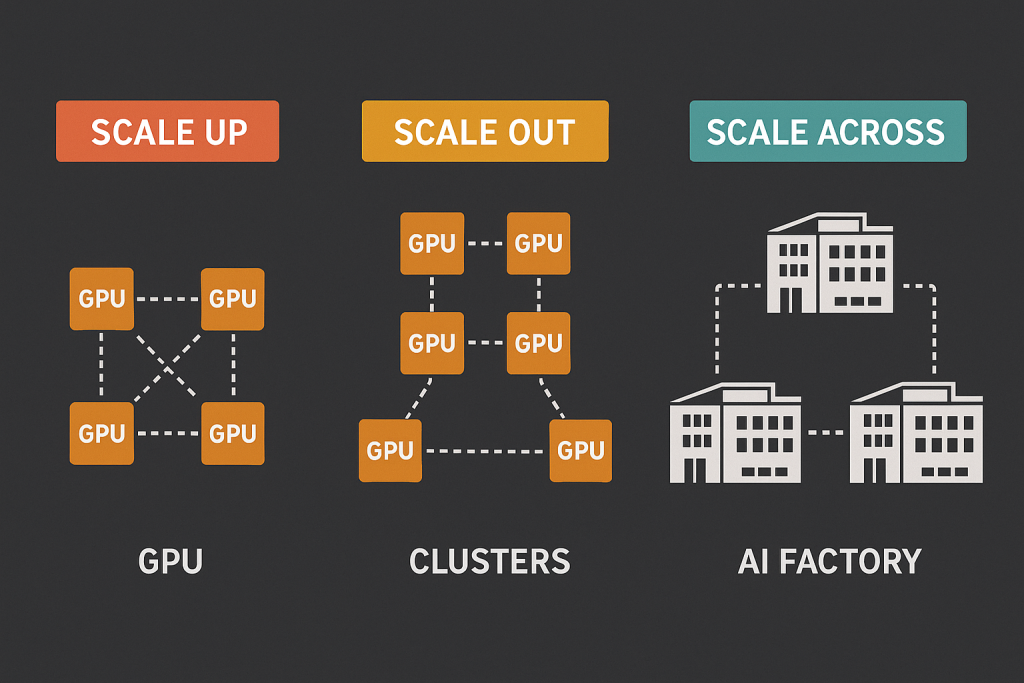Decoding NVIDIA’s AI Factory Product Maze

NVIDIA’s Q2 FY26 earnings call underscored once again that the company is not just a GPU vendor, rather it is an AI infrastructure company supporting the buildout of AI Factories. With revenue hitting $46.7B for the quarter and data center sales accelerating, the product portfolio is expanding so quickly that even seasoned observers struggle to keep the names straight. To help make sense of the landscape, we’ve compiled a cheat sheet mapping NVIDIA’s sprawling platforms, where they sit in the roadmap, and how much revenue they’re driving.
From Automation to Agentic AI: Securing the Future of Infrastructure

From Automation to Agentic AI: Securing the Future of Infrastructure
Fabrix.ai: Bringing Agentic AI to IT Operations and Observability

Fabrix.ai: Bringing Agentic AI to IT Operations and Observability
Elide is Reimagining Runtimes for Modern Development

Elide is a polyglot runtime built on GraalVM that reimagines Node.js for the modern era. With support for Java, Python, Kotlin, and Ruby, it delivers up to 75x performance gains and a unified developer experience across languages.
A Strategic Analysis of the Future of AI and Robotics: From Industrial Efficiency to Embodied Intelligence

We believe the convergence of artificial intelligence, advanced computing, and robotics is not merely an incremental technological step; it is a “systems revolution,” as described by industry leaders, creating a new, dynamic market landscape with profound economic and societal implications.
Special Breaking Analysis: Inside the AI-Networking Fabric Debate – Why Purpose-Built is Winning and Why Openness Still Matters

We believe the center of gravity in AI infrastructure has shifted from servers to AI factories, where networking is perhaps as critical as compute. Our analysis of an interview with NVIDIA SVP of Networking, Gilad Shainer, indicates NVIDIA’s thesis is straightforward. Specifically, that scale-up fabrics (NVLink/NVLink Fusion) plus scale-out Ethernet purpose-built for AI (Spectrum-X) — and increasingly scale-across for multi–data center topologies (Spectrum-XGS) — deliver superior determinism, efficiency, and time-to-outcomes at giga-scale. At the same time, the market is too large and heterogeneous for any single fabric to dominate; open standards and merchant Ethernet will continue to win broad adoption, and even NVIDIA is embracing open interfaces and ecosystems to complement its proprietary advantages. In our view, NVIDIA is a somewhat rare case where first-mover advantage has paid off. Its early conviction in parallel computing, GPUs, CUDA/NCCL software moats, and the Mellanox acquisition now underpin a defensible systems position across scale-up, scale-out, and (increasingly) scale-across.
288 | Breaking Analysis | Cyber is Your #1 Risk and You’re Likely Unprepared

Cybersecurity is the number one risk facing enterprises today, and yet organizations remain dangerously unprepared. Executives are not blind to the problem — they understand the financial exposure, the reputational stakes, and the business impact of a major breach. They acknowledge gaps in their defenses and recognize the vulnerabilities that could cripple their mission-critical systems. But awareness has not translated into readiness and true business resilience remains elusive for the vast majority of firms. Data strategies are especially important – specifically data governance, data protection, and data quality. These remain essential elements of cyber resilience, but they’re only part of the equation. True business resilience requires confronting a multitude of dimensions — from application security to identity, supply chain integrity, operational continuity, infrastructure defenses and more. The uncomfortable truth is that most firms still lack the cohesive strategy, investment, and execution to protect their most vital assets.
How Avocado OS Simplifies the Path to Scale

Avocado OS, developed by Peridio, brings cloud-native practices to embedded Linux, enabling scalable, AI-ready development at the edge. Learn how it simplifies embedded workflows without sacrificing system integrity.
287 | Breaking Analysis | Decoding Trump’s Intel Pivot

Donald Trump’s 180 on Intel is at least directionally correct, certainly more so than calling for the ouster of Lip-Bu Tan, Intel’s CEO. But a contemplated investment by the US in Intel, as reported by Bloomberg and the Wall Street Journal, without a significant restructuring of Intel’s entire business, is a recipe for failure in our view. Specifically, we continue to urge Intel’s board to spin out its foundry business. Every day it waits further decreases foundry’s value. Moreover, we call on the U.S. government to use money from the CHIPS Act and its influence on large US chip designers, and TSMC, to secure a position for a US-domiciled company in advanced semiconductor manufacturing.
